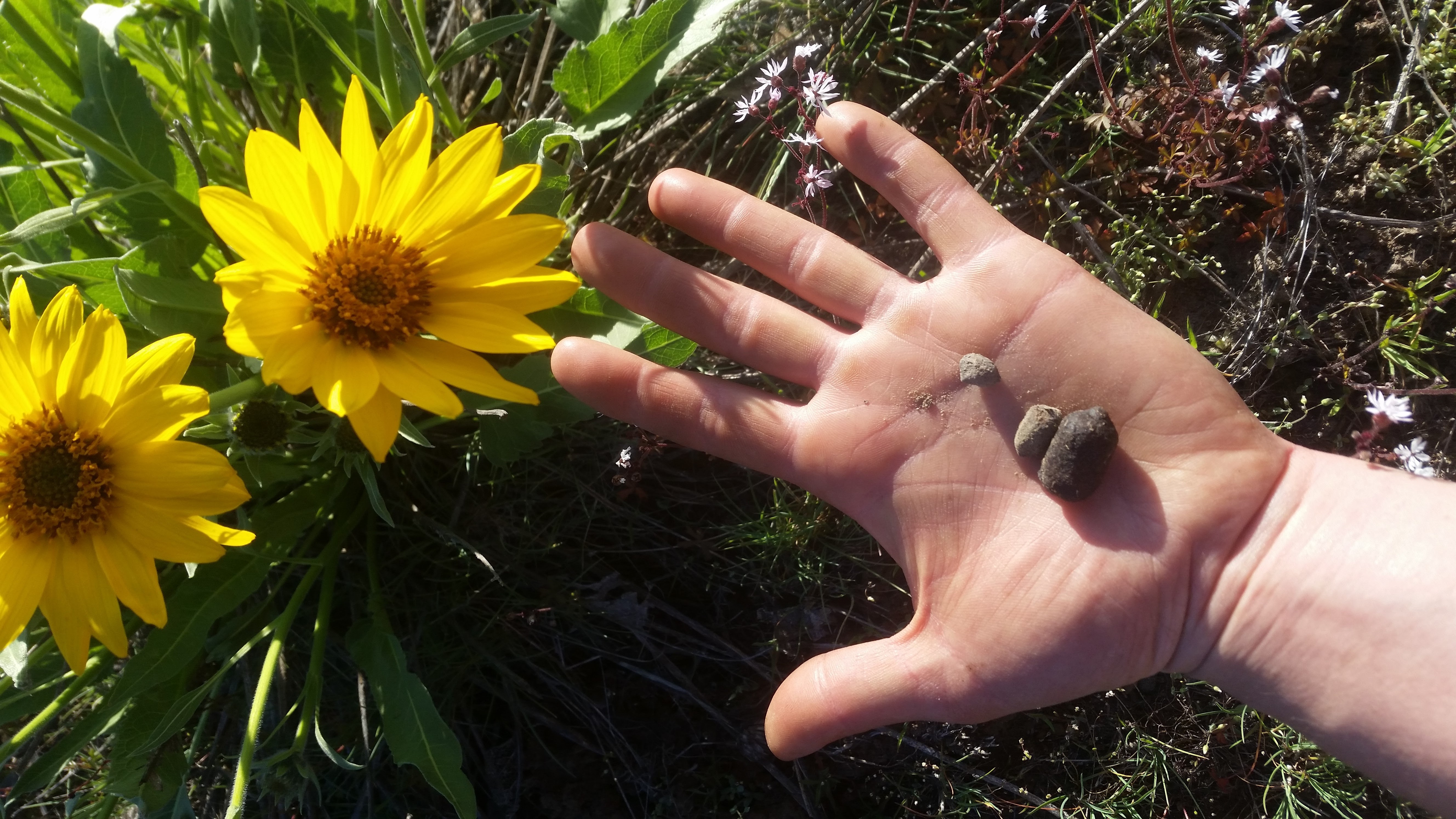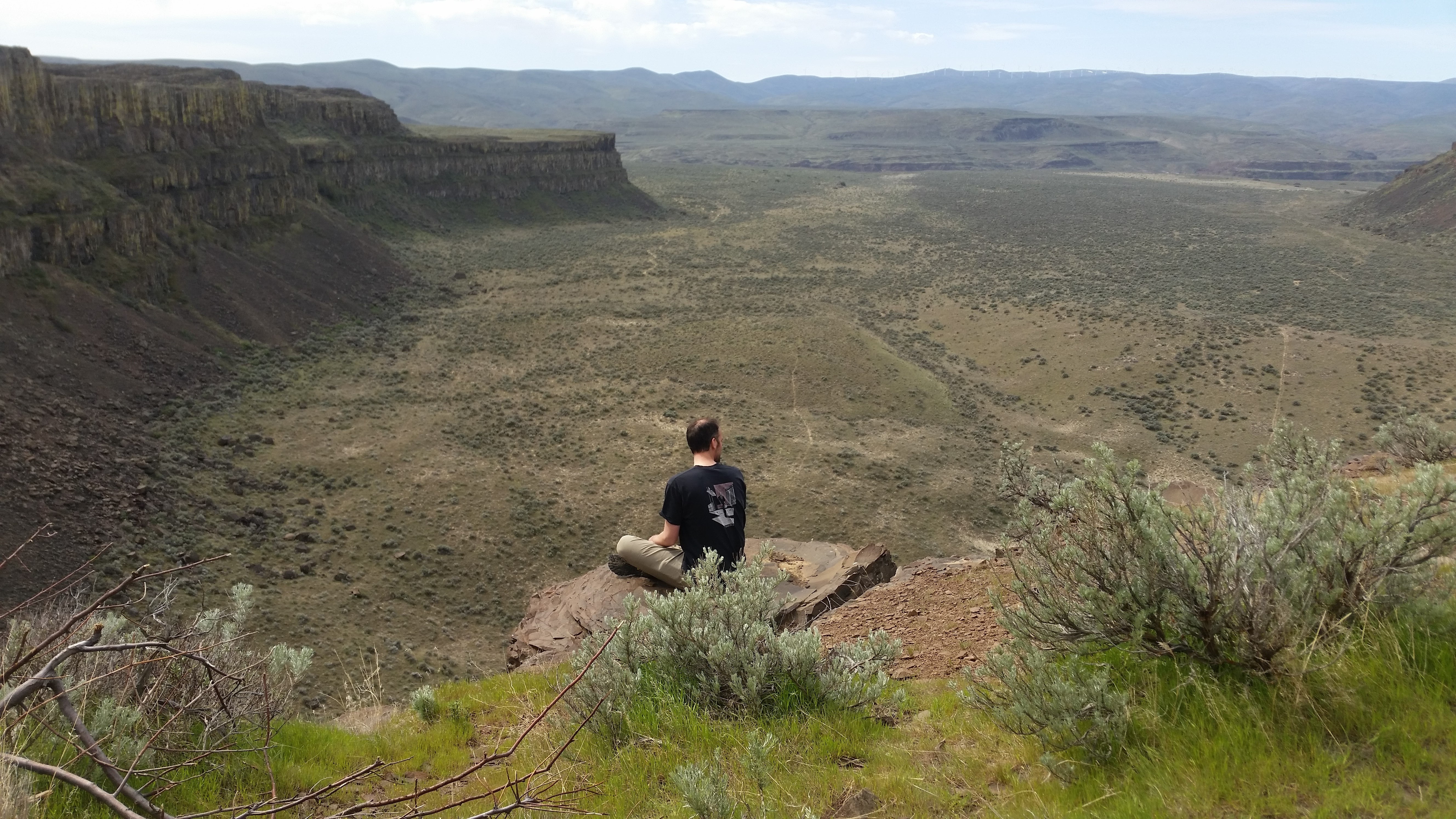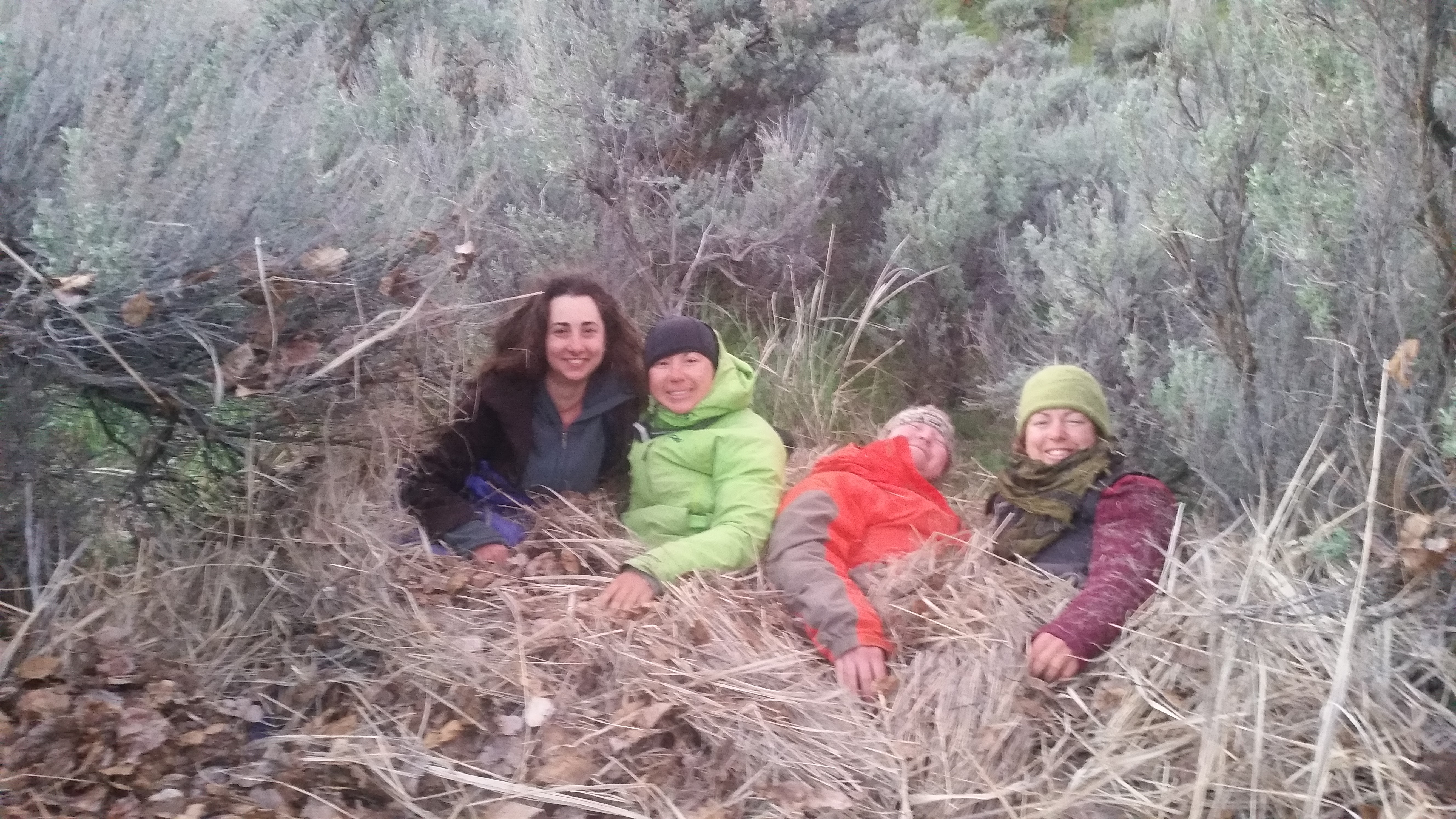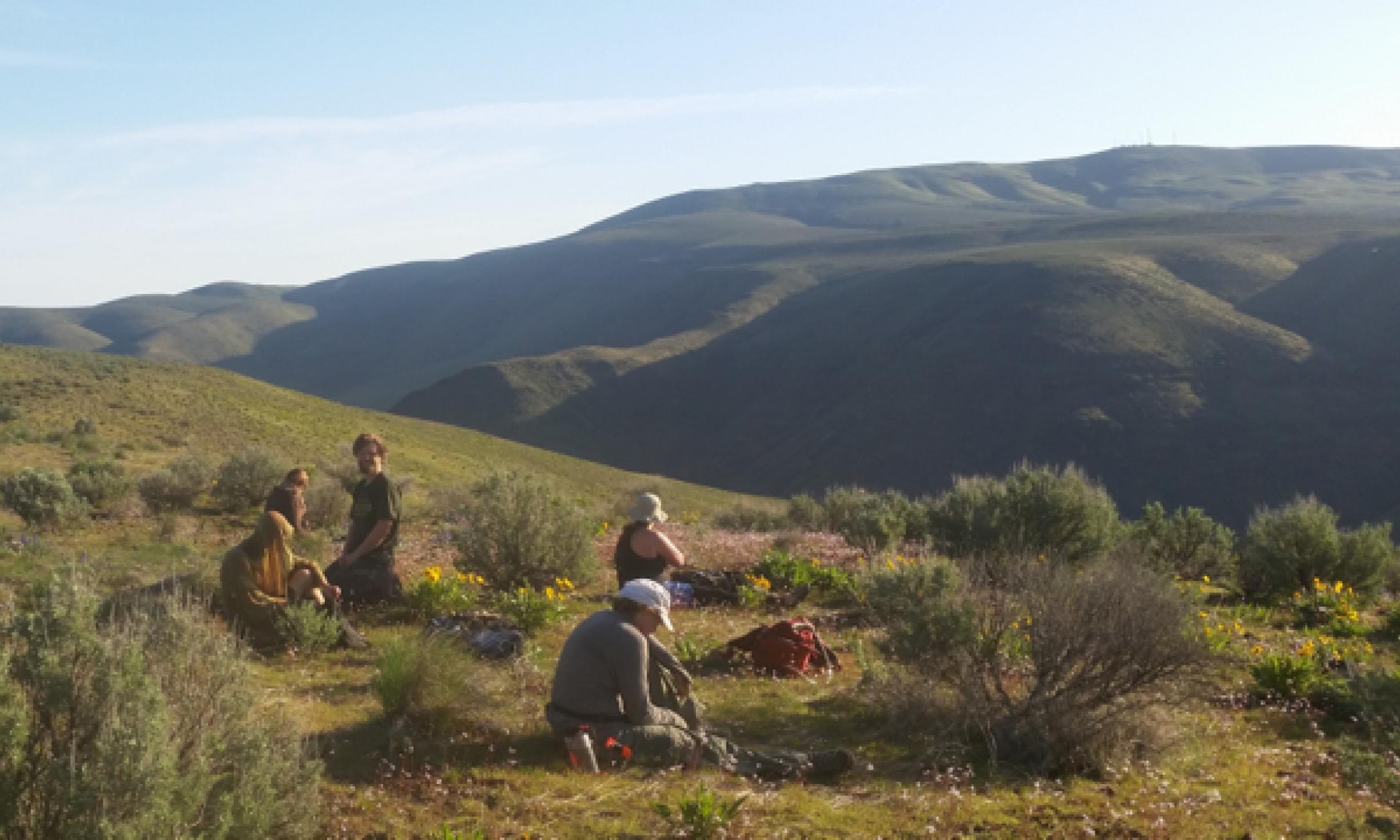It’s become quite a familiar job: packing up my backpack for an overnight trip with The Immersion at Wilderness Awareness School. I no longer have the dilemma of trying to decide how many pairs of socks, wool pants, or extra sweaters to bring. Now it’s a quick job with fewer items that need to be stuffed into my backpack. I no longer feel as reliant on my ‘things’. I feel more comfortable dealing with unforeseen circumstances. I am also less anxious about being uncomfortable, cold, or wet in the woods, as I know through experience my limits of discomfort. I also know how long I can stay at this edge without actually hurting myself.

Students began to trickle into the front of Cedar Lodge (the main building on the land where we have most of our classes). The sun was shining and we could see one another (this is a rarity for longer field trips because usually we leave well before the sun even thinks about coming over the horizon). Our class is now familiar with the routine and various individuals stepped up to make sure the tasks were completed.
We prepared for our last extended class trip before the final stretch of the program – known as the “Gauntlet”.
Destination: The high desert of Eastern Washington
Focus: Geology & Naturalist Studies
Duration: 4 days
Our van trip was quick compared to the 1.5 days of travel down to California. We were honored to have Ellen Haas (a W.A.S elder) and Jonathan Goff – Immersion alumni – join us and share some amazing geological history of that landscape. Where we were staying was home of the largest basalt floods on the planet.
The sun blessed us all four days of our journey, getting warmer and warmer as the days progressed. We broke out into groups and headed onto the landscape. Each group had a different focus.

Here are some highlights:
– Driving up to hexagonal basalt cliffs that towered above us. We climbed out of the van and got up close to these magical stone formations. I felt like a tiny ant peering up to the massive creations around us. It was incredible to learn the geological events that shaped these breathtaking formations: volcanoes, glaciers, floods, rivers.
– Wandering throughout the desert landscape of sagebrush, arrowleaf balsamroot, various grasses, and clay.
– Tracking mammals, birds, and insects in the perfect clay substrate. There were fascinating mineral deposits forming on the edges of the tracks that were imprinted in the clay.
– Watching giant sea monkey-like critters swimming in puddles.
– Seeing a rattlesnake for the first time in my life.
– Finding a dead scorpion laying in the sand.
Those were great moments, but these were my three favorite highlights of the trip.
1. Starting a hand-drill friction fire off the land with a classmate, from sage and mullein that was freshly harvested off the landscape.
2. Convincing 5 of my classmates that the best place to spend the night was in a pile of leaves and grass. We created a massive bed with these two insulators. It was empowering to improve our shelter design every day; allowing us to sleep better every night. We went from being chilly the first night and no one sleeping much, to one Immersion student climbing out of our nest and sleeping on the ground because she was too hot!

3. An evening scouting game where we crawled around stealthily in the shadows attempting to sneak up to our classmates who were standing around a fire.
Talking to my classmates, everyone had different stories to share about what they were most excited about from the Eastern Washington Naturalist Studies trip. It was a powerful blend of beautiful landscapes, brilliant sunshine, and passion-based learning.
